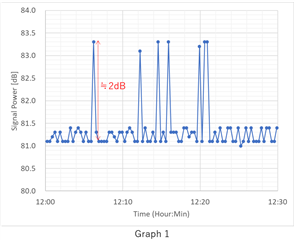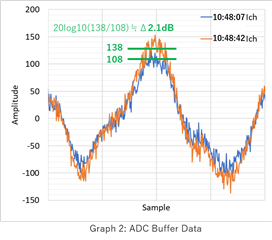Tool/software:
Hi,
-
Question:
We designed our own radar hardware board based on IWR1843 chip.
By repeating a series of operations: turning the power OFF, then ON, and measuring, the sensitivity of a certain target varies by about 2dB as shown in Graph 1.
What could be the possible factors?
- Measurement environment of Graph 1:
The target was continuously measured indoors (with possible temperature fluctuations).
During measurement, the positions of the radar and target, as well as surrounding structures, remained unchanged. - Investigation conducted:
It has been confirmed that the RF transmit power remains constant before and after the sensitivity fluctuation.
It has been confirmed that the amplitude of the RF received waveform (ADC buffer data) fluctuates by about 2dB in power before and after the sensitivity fluctuation.
Best regards,
Yasuaki


